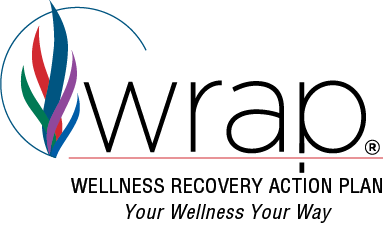The first three articles in this series explained different ways that people with addictions can use a Wellness Recovery Action Plan. This final installment discusses using WRAP at a systems level and integrating it into addiction treatment and recovery at all levels and stages of care (i.e., across the continuum of care).
Read Part 1. Read Part 2. Read Part 3.
Because there is evidence that wellness and recovery self-management, specifically WRAP, are effective for people who want to get well and stay well, health care communities have begun to include these kinds of tools and approaches as part of the vision for a person-centered, recovery-oriented system of care. For the last two decades, WRAP has promoted independence and the dignity of choice within the mental health continuum of care.
As the shifting winds of health policy alternate between medical and recovery model approaches to behavioral health treatment, WRAP can continue to bring consumer choice, shared decision-making, and recovery self-management into practice across health care service systems. In the addiction world, there is a great deal of common ground in the recovery dimensions WRAP supports for people dealing with both a substance use disorder and mental disorder. There are also distinct roles WRAP can play in current high-risk environments for meeting the unique challenges people in addiction recovery face when seeking medical care.
One protection WRAP offers is that it helps minimize the use of prescribed medications that can trigger a relapse into drug or alcohol use. If a person in recovery has to use medications to treat physical or behavioral health problems such as chronic pain, anxiety, or sleep problems—which are common among people in addiction recovery—it can place people at an elevated risk of relapse. Health care providers differ in their levels of understanding and experience with these issues.
However, many people in long-term recovery are well aware of the medications they can and cannot take if they want to avoid relapse. Having a plan that specifies medications that are safe, those that can be taken with caution when necessary, and those that should be avoided at all costs can lower the risks people face when seeking inpatient or outpatient care for common conditions. WRAP can also help protect individuals receiving medication-assisted treatment for an opioid or alcohol use disorder from harmful medication interactions.
WRAP’s emphasis on crisis and post-crisis planning is also relevant to criminal justice involvement, an issue for many people with addictions or individuals with co-occurring mental and substance use disorders. People involved with the courts, who are on probation, or who are entering or returning from a period in custody can use WRAP to support appropriate care transitions. There are no guarantees that medications and treatments for people with addictions and/or mental disorders will continue uninterrupted while in a custody setting, but having an advance directive that addresses these circumstances can help. (Perhaps this is why several state correctional systems have policies that mandate WRAP as part of treatment programming.)
Having a plan in place can support the care coordination between re-entry programs and community treatment and recovery service providers so that they’re aware of the kind of care or treatment a person wants or doesn’t want. WRAP components can also address the extremely high risk of drug overdose that people face immediately after being released from incarceration, and WRAP can help make the transition back into the community safer and smoother.
Peer and community-based addiction recovery supports are often an important part of the healing process for people in recovery. These community organizations can be key partners in overdose prevention and harm/risk reduction efforts, especially in areas that have been hit hardest by the opioid epidemic. Overdose education, recovery coaching, and bystander training for using naloxone are some of the life-saving services these organizations deliver with support from local prevention coalitions and national initiatives, such as the Access to Recovery and Recovery Community Support grant programs. These are some of the resources WRAP Facilitators can use to encourage people in recovery to incorporate life-saving risk reduction and overdose prevention measures in their personal WRAP.
Thirty years ago, a health care professional told me that I was a liar by nature and that it was easy to tell when I was lying—my lips were moving. Negative attitudes like this toward people with mental health conditions and substance use disorders have changed since then—they aren’t nearly as widespread today, but they can still limit our ability to heal. The current demand for addiction treatment far exceeds the capacity of our health care system. Thousands of individuals and families are waiting for the opportunity to receive life-saving treatments for opioid use disorders and other addiction-related illnesses. These people face a much higher risk of overdose death when they begin their recovery, whether they do so by themselves or with the help of professional treatment services.
In my community, I work with young people every day who are dealing with poverty, the absence of reliable transportation, and a host of other treatment barriers. Unfortunately, they are too often expelled from programs for arriving late to group or breaking minor rules that are unimportant when compared to the heightened mortality risk they face. Hopefully, mental health and recovery settings can continue moving toward a model of greater self-advocacy, education, and support so that people seeking treatment services are met with less stigma and are given more freedom to advocate for their wellness their way.
“Be the change you want to see in the world,” are important words to live by in the world of mental health and addictions treatment. My dream is that more recovering survivors join the effort to be the change they want to see and that they also make WRAP part of that change—a call to wellness, action, and recovery for people dealing with addiction.

Niki A. Miller, MS, CPS, is a Senior Research Associate at Advocates for Human Potential, Inc.






